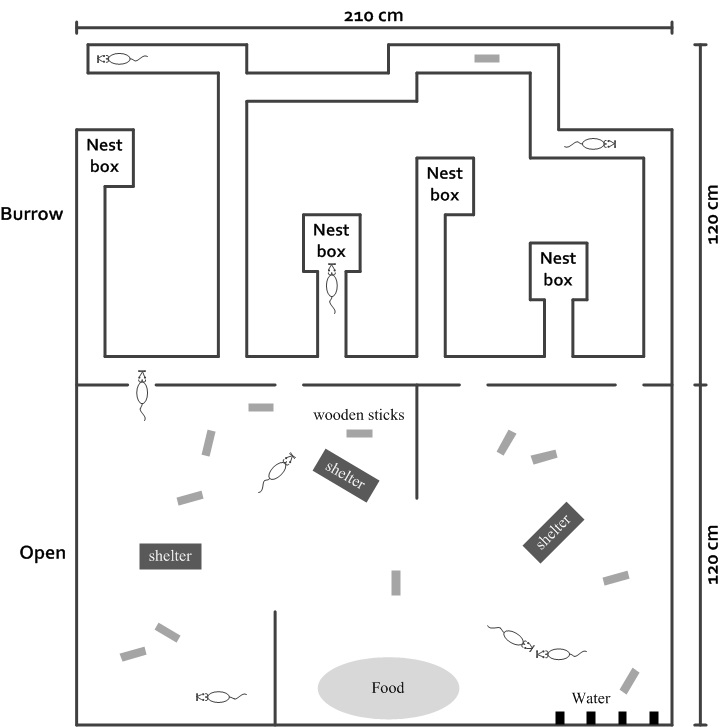New paper: Are the kids alright? The effects of antidepressant use during pregnancy
When pregnant women get depressed, they often get treated with the antidepressant fluoxetine. Using this antidepressant is generally safe and can be necessary to lessen the effects of depression. Still, it has been difficult to find out if this drug has damaging long-term effects on the children of these mothers. In our latest work, we have found that adult rats behave differently when their mothers were given fluoxetine during pregnancy and breastfeeding. Social behavior and coping with stress are types of behavior that appear to be changed. The findings are published in the journal Neuropharmacology.
Fluoxetine is a so-called selective serotonin reuptake inhibitor (SSRI), which increases the concentration of the signal molecule serotonin in the small gaps between brain cells. The mechanism behind the antidepressant effect of SSRIs is still unclear, but elevated levels of serotonin may play a role. But serotonin also has a role in the development of the brain of a fetus. So if a fetus is exposed to a drug that elevates serotonin levels, does something happen to the brain, and would we still see these effects when the children are grown up?
Previous research with humans showed that children that were exposed to SSRIs can sometimes have a different social-emotional development. Some even suggested that the risk for autism spectrum disorders (ASD) is higher. But pregnant women only use antidepressants because they are depressed, which in itself is known for having effects on the child.
To make sure that we can separate the possible effects of a depression from those of the antidepressant, animals can be used. Some animal studies show differences in aggression, play behavior and sexual behavior if rats were exposed to SSRIs during development. Very often though, only one type of behavior can be tested at a time, and the time an animal is tested is limited. The results of these tests can indicate that something has gone wrong in isolation, but do not tell us how big the effects are ‘in real life’.
In our experiments, we treated healthy, female rats with fluoxetine (or a control substance) during the period of pregnancy and breastfeeding. We let their pups grow up and put them together (eight at a time) in a seminatural environment for eight days. This seminatural environment is much bigger than a usual test box and is divided in an open area (where it gets light and dark during the day) and a dark ‘burrow’ area that looks similar to the tunnels of rats under the ground. This way we could study in detail how each animal behaved and interacted with its environment and the other animals.

When we analyzed the animals’ behavior at baseline on the fourth day in the seminatural environment, we saw that both fluoxetine (FLX) exposed males and females spent more time on social behavior. More specifically, the animals were resting together and ‘cuddling’ more, compared to the control animals (passive social behavior). On the other hand, FLX-females tended to take less part in active social behavior.
To see if their behavior changed during and immediately after a stressful situation, we played a loud white-noise for 10 minutes. This caused the animals to run around in the burrow area much more. In the open area, it is more difficult to hide: animals that were there, mostly fled to the burrow, but some froze in the open area. The differences we saw earlier disappeared: the social behavior of exposed animals was no longer different from the control animals. However, we saw that the FLX females that liked cuddling with other rats now started to rest more alone, while the control females were instead seeking each other’s company.
Rodents groom themselves very frequently. Besides the obvious purpose of skincare, self-grooming can also be seen more during and after stressful situations. This type of self-grooming has previously been explained as displacement behavior. At baseline, especially the FLX-males behaved differently from the control-males: they self-groomed much less. But after the white noise, they started self-grooming more than before, even more than control-animals. FLX-females also spent more time on self-grooming than before the stressful situation. We believe that this increase in self-grooming is a sign of increased stress levels, and that they use self-grooming as coping mechanism.
This study showed that, in rats, SSRI exposure during and immediately after pregnancy was associated with long-term effects on social behavior and stress-coping. In addition, these differences are not equal between males and females. We also showed that the seminatural environment provides a good experimental setting, in which we can study many different behaviors and their interactions. We do have to be careful to draw big conclusions about the use of SSRIs. Even though we see that social behavior and stress-coping are different after SSRI exposure as fetus, that does not necessarily mean that these animals were worse off. Much more research is needed to map long-term effects of SSRIs on different types of behaviors.
This study is part of a collaboration between our group at UiT The Arctic University of Norway and the University of Groningen. It was funded by Helse Nord RHF.
[Summary by Roy Heijkoop]
Houwing, D. J., Heijkoop, R., Olivier, J. D., & Snoeren, E. M. (2019). Perinatal fluoxetine exposure changes social and stress-coping behavior in adult rats housed in a seminatural environment. Neuropharmacology, 151, 84-97. doi:10.1016/j.neuropharm.2019.03.037
Last updated: 30.03.2020 15:28